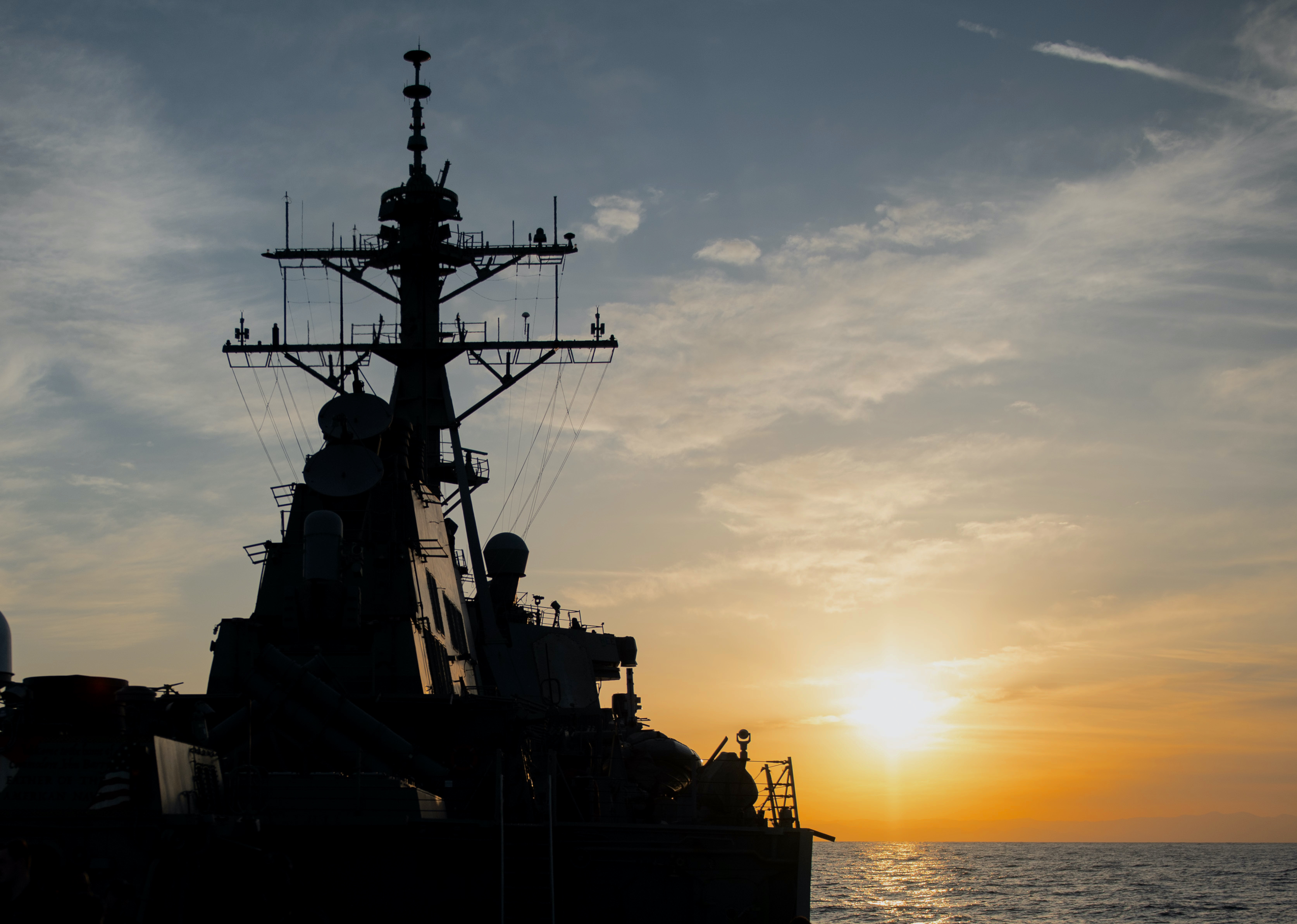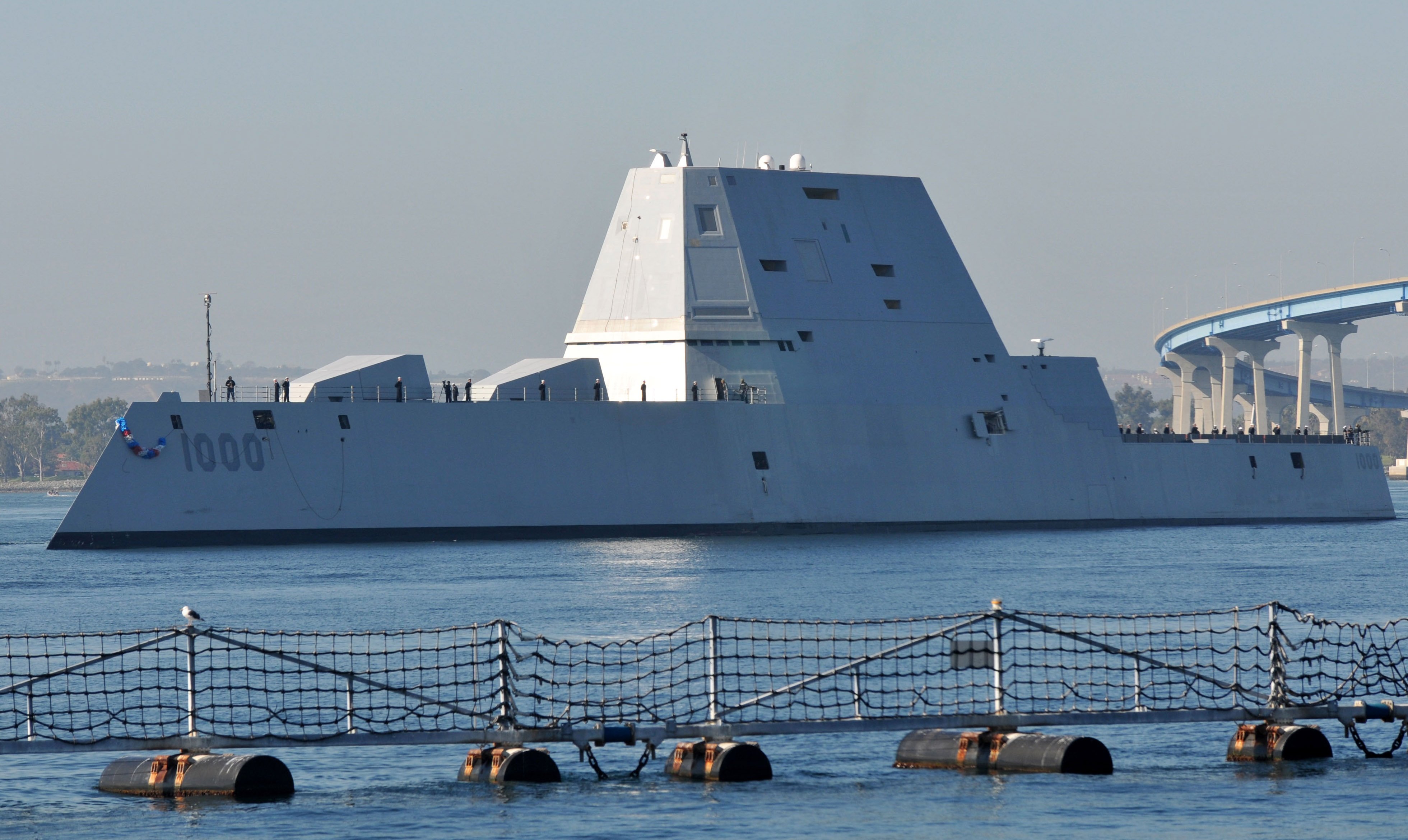
The Navy’s next warship needs more missiles than the current crop of Arleigh Burke guided-missile destroyers but must be smaller and cheaper than the trio of Zumwalt-class DDGs, Chief of Naval Operations Adm. Mike Gilday said on Tuesday.
Tentatively dubbed “DDG Next” by Gilday, the new class of large surface combatants would start with the existing systems in use on current ships or in development for Burke Flight IIIs on a new hull form that would allow the Navy to add capabilities over the life of the ship.
“I’m limited, with respect to DDG Flight IIIs, in terms of what additional stuff we could put in those ships,” he said at a virtual DefenseOne conference.
For Gilday, the most important task for the new hull is to provide the service with the volume to add additional vertical launch cells and the margin to grow. As the service continues to reorient itself to a world of more complex combat, the Navy is planning on introducing longer-range hypersonic weapons as part of its development, Gilday said.
“I need deeper magazines,” he said.
Development of Flight III was a compromise solution for the Navy following the 2010 cancellation of the next-generation guided-missile cruiser program (CG(X)). Early estimates for CG(X) called for a ship that would weigh in at 20,000 to 25,000 tons and at a projected cost of more than $6 billion per hull. Gilday said he wanted to build a more affordable ship.
“I don’t want to build a monstrosity,” Gilday said. “When you talk about large surface combatants, people in their mind’s eye are thinking battleships. That’s not what I’m talking about. That’s not where we’re going.”
He said the size of the ship would be larger than the current 9,000-ton Burkes but likely smaller than the 16,000-ton Zumwalts. The ship would also likely borrow from the Integrated Power System from the Zumwalts to provide energy to future directed energy weapons and high-power sensors.
“We really need that type of power generation to be able to sustain weapons like directed energy,” he said.

The requirements effort for the next large surface combatant is still under development by the Navy’s surface warfare directorate, a Navy spokesperson confirmed to USNI News on Tuesday. The service faces increased congressional scrutiny over development of the hull due to testing and fielding requirements outlined in the FY 2020 National Defense Authorization Act.
The Navy has been developing a new surface combatant to replace the cruisers and destroyers for close to a decade in starts and stops, as the service has weighed what a new platform would need to do. Driving the latest conversation is the rise of long-range Chinese anti-ship weapons. Those new weapons are pushing the Navy to spread out its capabilities across unmanned platforms. Striking the balance between what the Navy needs on the new unmanned platforms and the next crewed warship has been a sticking point in the development of the surface platform.
“We know that we need a larger fleet. We know that it has to be more capable. It has to be more lethal, and it has to be more distributed in order to be optimal against the adversary that we think we’re going to face,” Gilday said.
“It’s the hybrid fleet that we need to build that brings together not just the fleet that we have today, but also takes a deep look at unmanned.”
The completion of the Office of Secretary of Defense’s new Battle Force 2045 fleet outline may provide a clearer path forward. While Defense Secretary Mark Esper outlined Battle Force 2045 in a speech last week, the Pentagon has not yet released any documents about the plan.
SSN(X)

In parallel, the Navy is also narrowing down what it wants from its next generation of attack submarines, the SSN(X). Battle Force 2045 places a major emphasis on developing an expanded fleet of attack submarines.
“The advantage we have in the undersea is an advantage that we need to not only maintain, but we need to expand. I want to own the undersea for forever because I know that I can be really lethal from the undersea,” Gilday said. “I know in terms of sea control and sea denial, that’s a significant advantage that we can bring to bear for an operational commander and the rest of the joint force.”
Gilday described requirements for an attack boat as more similar to the three-ship Seawolf-class (SSN-21) of submarines developed at the end of the Cold War. The Seawolf was designed as a high-speed, deep-diving, difficult-to-detect hunter that would stalk Russian submarines in the open ocean. The attack boats, capable of carrying up to 50 torpedoes or a combination of other weapons, are more lethal than the approximately 30-weapon capacity of the Virginia-class that was developed as a lower-cost option following the collapse of the Soviet Union. In 2018, the Congressional Budget Office reported that the Navy wanted to replace a potential Block VII class of Virginias with a new class of submarines that would place less of an emphasis on land strike missions.
“Specifically, the Navy indicates that the next-generation attack submarine should be faster, stealthier, and able to carry more torpedoes than the Virginia class—similar to the Seawolf-class submarine,” the CBO said in late 2018.
At the time, the move was a departure from the Navy’s previous plan to develop a submarine that was designed to be a host for unmanned underwater vehicles.
“I just don’t think it’s about a lot of missiles. I also think that speed’s an important factor that we have to take into account. The inherent mobility of naval forces is really important. When you think attack boat, you’re thinking, that can move around the timing and tempo of an operational commander’s need to deliver ordinance on target in a timely fashion. And so it’s got to be a fast sub as well,” Gilday said.





